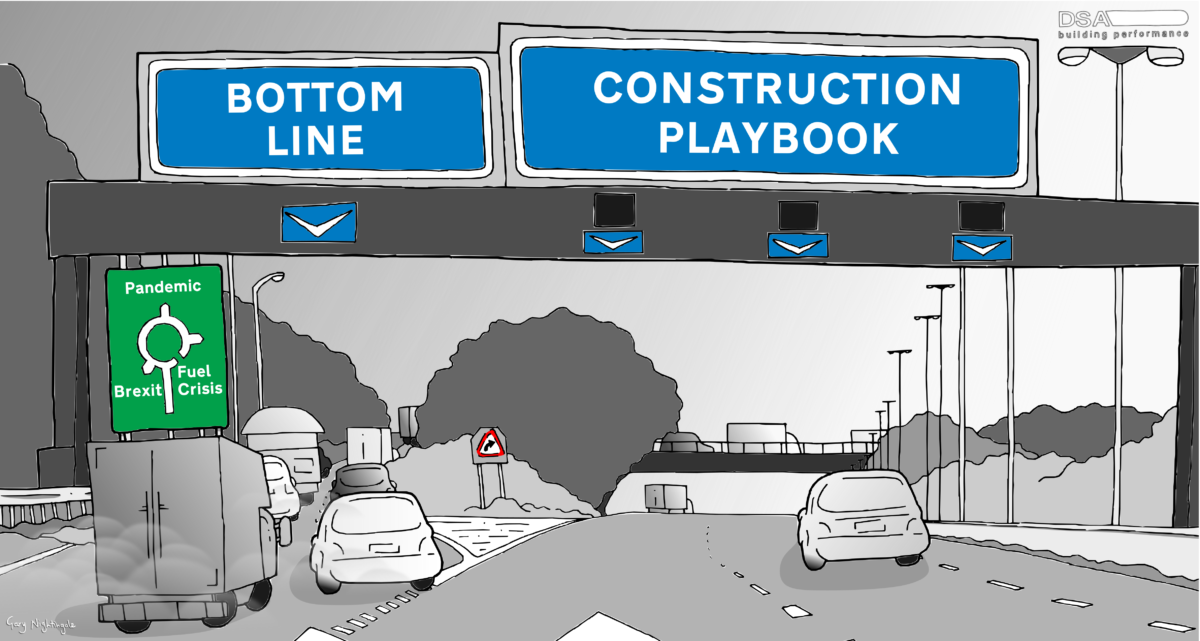Construction Playbook: five things to know

In December 2020 the government published the Construction Playbook, its new guide on procuring public works. It’s more of a rule book than a playbook, because it sets out how government contracting authorities – public clients – must start behaving from now on.
Analysis of the playbook identifies five broad ways construction business leaders should prepare for the changes it could bring.
1. Get ready to collaborate on bigger, longer projects
The playbook tells public clients to bundle projects into portfolios for bigger, longer contracts on the grounds that businesses will be more motivated to invest in developing the capabilities government wants if they can see a good return over the long run.
This would mean, rather than bidding for the contract to build a new school in a village, being part of a joint venture bidding to build 10 new schools in a region. This also applies to SMEs, which the playbook seeks to protect and promote.
The joint venture will be asked to demonstrate how, using the above desired capabilities, it will create ever-improving value for money throughout the portfolio contract, so that the 10th school is delivered faster, cheaper, to higher quality standards and giving more “value” than the first. (Let’s take a look at “value” shortly.)
We’re talking real collaboration here, with hearts and heads engaged to achieve a precious, shared goal, as opposed to superficial, formalistic alliances where parties keep one eye on the contract, one on their bottom line, and a third on the exit – a mindset we might call “co-opetition”.
The call for greater collaboration comes up repeatedly in the playbook, in terms of early supply-chain engagement, how contracts should be designed, fairer risk allocation and clients upping their collaboration with contractors.
2. Keep a watching brief for MMC
The government has talked about the need for MMC for years, and the playbook continues this. MMC generally means offsite construction in its various forms. But the playbook also recognises that construction companies can’t really lead on this because so much depends on what clients specify.
When it comes to government buildings such as schools, courts, healthcare facilities, social housing and offices, MMC cannot replace traditional construction without the wholesale standardisation of manufacturable building components that are interoperable with all the other bits they connect to in the building.
Such standardisation is a big task, akin to rewriting building codes and creating a new industry around it. The government would have to drive it, as the playbook acknowledges with its call for government clients to “harmonise, digitise and rationalise demand”.
There are moves in this direction. The Construction Innovation Hub’s Platform Design Programme is working on a platform construction system consisting of a standardised kit of parts for government buildings.
3. Embrace digital now
When it comes to digital innovation, the playbook expects clients and suppliers to meet in the middle by developing their capabilities in tandem.
It wants public clients to embrace the standards set out in the UK BIM Framework, and to procure construction work accordingly – so companies should become conversant with the framework if they want to be considered for public sector work.
See it as an emerging strategic imperative. If that capability does not exist now, businesses should set in place the necessary leadership, goal-setting, capacity-building and collaboration.


Coach for Results
Designed with young professionals in mind
Perform better in your current role, become an effective manager and over time a great leader and together we will change the construction industry.
4. Get up to speed on the subject of value
The playbook instructs public clients to look beyond the initial capital cost of what they want built, and instead to practise “value-based procurement”, which tries to take into account costs and benefits over the whole life of the asset, including capital, maintenance, management, operation and exit.
This makes sense, but it is getting into crystal ball territory because evaluating whole-life value involves making predictions about the future.
There’s more. Onto value-based procurement the playbook bolts another value, “social value”, which clients must now try to achieve with their projects and evaluate bids for. Social value includes everything from helping communities recover from the pandemic and supporting entrepreneurship to fighting climate change and tackling inequality.
The government is serious about this. In September 2020 it published a policy note setting out what constitutes “social value”. From January 2021 social value must constitute at least 10% of a bid’s total score, and public clients have to show how social value was a differentiating factor in the winning bid.
Clients will have to do a lot of new thinking to work out how to evaluate a bid’s whole-life value and social value. Such judgments are predictive, abstract and often subjective. It’s likely they will welcome help with this new thinking.
5. Prepare for a serious relationship
Refreshingly, the playbook dedicates an entire chapter to relationships. They are the foundation of results, and yet our industry practically ignores them and hides behind the contract, assuming that good relationships, like acts of God, either happen or don’t.
The playbook tells public clients to embrace a partnership model with “the principles of collaboration, openness, transparency and flexibility” because this drives successful outcomes and innovation. Yes, it does.
Most guidance on relationships in construction relies on hard mechanisms – contracts, protocols, checklists and key performance indicators – which misses the mark because hard mechanisms can be gamed, or met in letter but not in spirit.
The playbook acknowledges that behaviours can evoke the emotional content that good relationships need, such as trust, honesty, candour, respect and enthusiasm.
